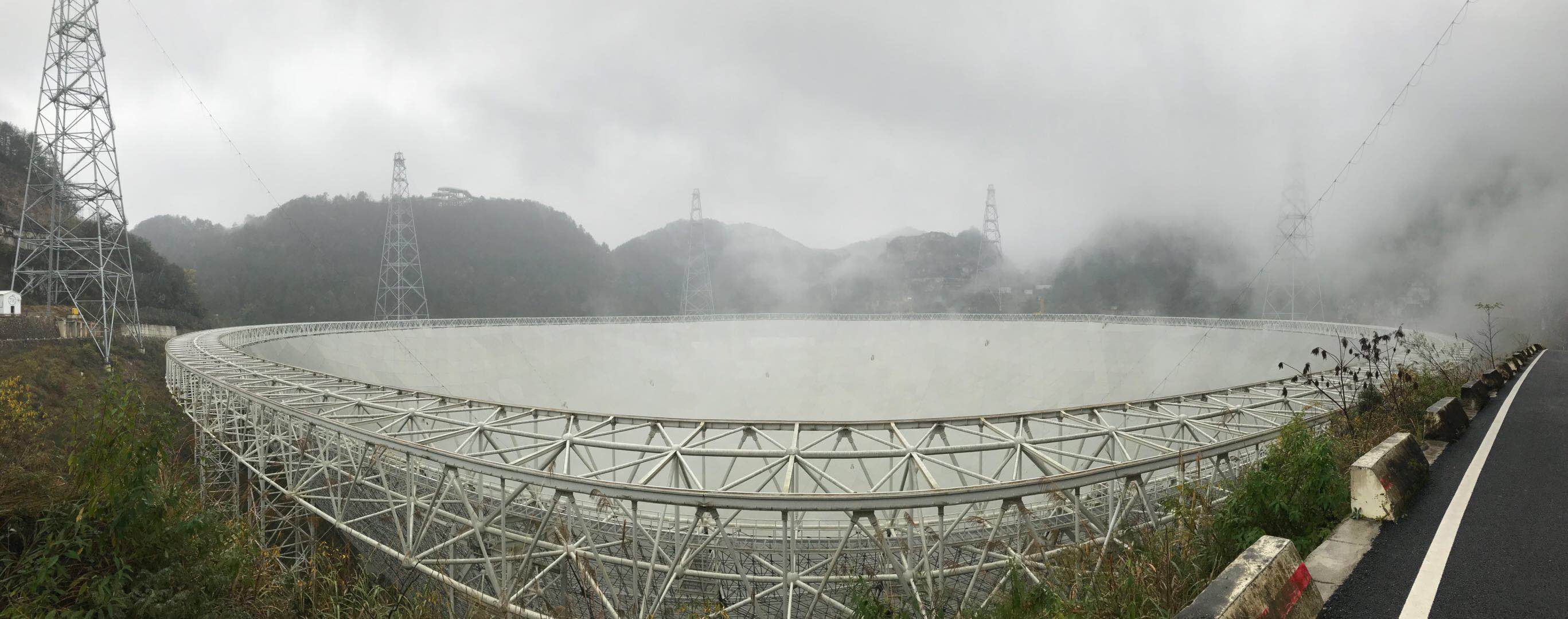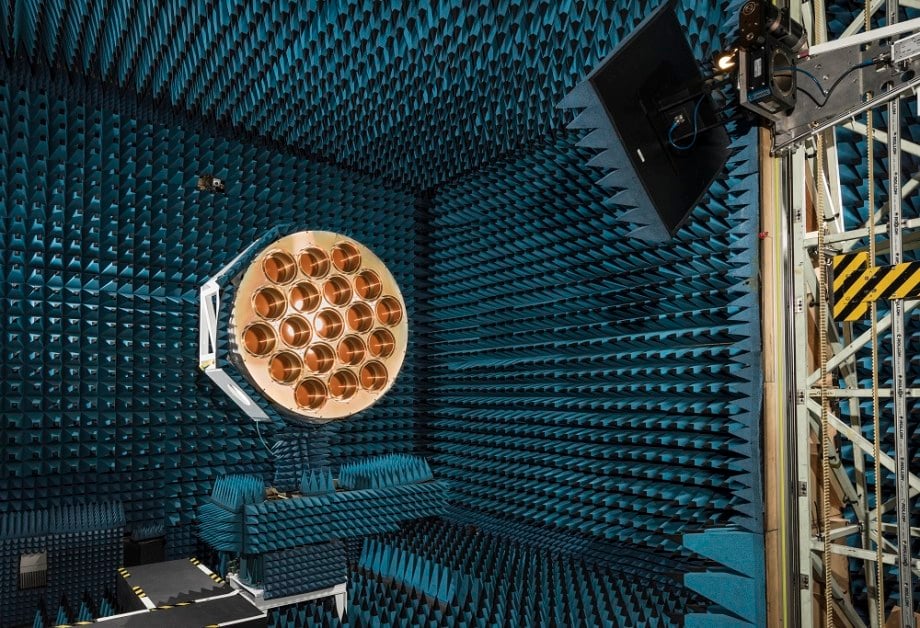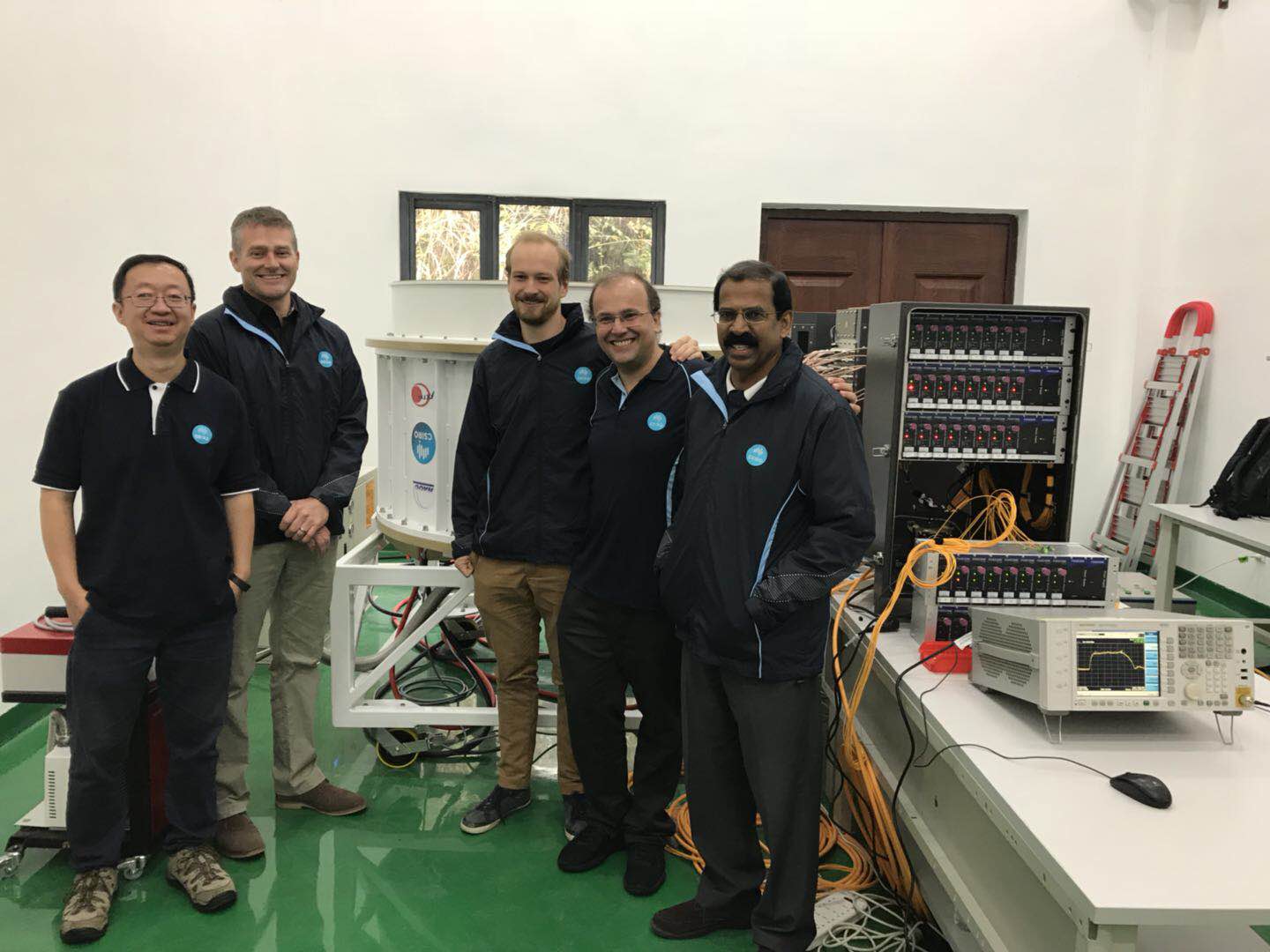The Dish: not Just in Parkes but Also in Southwest China
31 December 2017
We’re all fond of our radio telescope in Parkes in rural New South Wales. You’ll remember it from school trips or the acclaimed movie the The Dish, which tells the story of how it received images of man’s first landing on the moon and then relayed them to awestruck audiences around the world in 1969.
But did you know that our dish now has a much bigger sister located deep in the mountains of Guizhou province in southwest China?

The 500-metre aperture spherical telescope (FAST) in China's Pingtang county
Called FAST (Five hundred metre Aperture Spherical Telescope), this single-dish radio telescope is the world’s largest. It was developed by the National Astronomical Observatories of China (NAOC) and enables astronomers to search for signals, including detecting new pulsars (a small, rapidly spinning neutron star) in our galaxy and possibly the first radio pulsars in other galaxies.
With a diameter of 500 metres, FAST is gigantic compared to our 64 metre diameter dish at Parkes, but the two telescopes – and the institutions behind them – are close working partners. They symbolise the remarkable cooperation between Australia and China in science and technology.
Australia plays a crucial role in FAST’s development through CSIRO’s design and manufacture of the all-important 19-beam receiver. It allows FAST to receive signals from a wider range of frequencies, increasing its sensitivity by more than ten times.

The 19-beam receiver for FAST being tested in Sydney before being shipped to China. Photo credit: CSIRO
The Parkes radio telescope – operated by CSIRO – and FAST are complementary instruments. Pulsars discovered with FAST are being confirmed, and studied in detail, using our dish in Parkes. CSIRO's technology and experience is helping FAST significantly increase the speed and scope of observations.
Our dish in Parkes has found more than half of the approximately 2,600 known pulsars. New to the game, FAST has now discovered at least 10 new pulsars since it was built, and thousands more may be found in the future.

CSIRO scientists standing in front of the receiver
CSIRO is also collaborating with NAOC on the processing and archiving of data generated by the receiver.
The most important task of FAST is to discover new neutron stars or new kinds of radio molecules to enhance our understanding of the universe. If aliens really exist in the vastness of the sky, FAST and Parkes will be able detect their signals and analyse them!
A key figure in the CSIRO’s collaboration with FAST is Australian astronomer Dr George Hobbs. He is one of the 45 protagonists in the “45 years, 45 stories” project to celebrate the 45th anniversary of the establishment of diplomatic relations between China and Australia. His story can be found here.
Dr George Hobbs being interviewed by ABC at FAST
Our exciting cooperation with FAST is just beginning. I’m looking forward to deeper cooperation and joint projects between Australia and China that will help uncover the mysteries of the universe.
